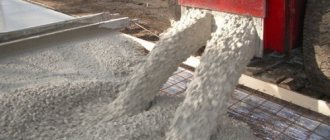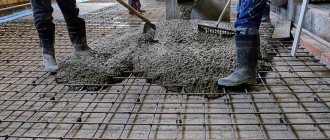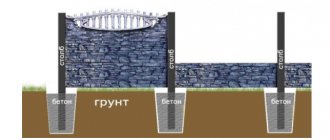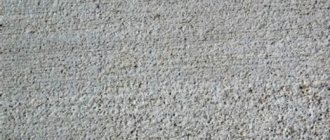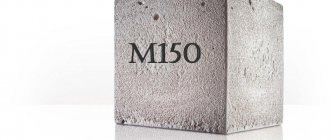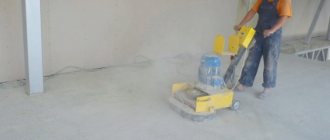Composition of gravel-sand mixture
The name of this bulk material speaks for itself: the components of the mixture are sand and gravel. The standards provide for a certain amount of dust inclusions and clay lumps. The content of the former should not be higher than 5%, the latter – no more than 1%.
The gravel-sand mixture can be natural or enriched. Natural (PGS) is produced by direct extraction, and enriched is obtained by artificially mixing sand and gravel.
The percentage of gravel in the mixture is essential. Its cost also depends on this. The presence of gravel is acceptable at least 15%, but in some cases its amount can be 75%.
PGS - industrial civil engineering
The second decoding of the abbreviation PGS means industrial civil construction. Construction workers are one of the most in-demand professions.
currently. They are the ones who arrange the environment, making it suitable for human life and erect masterpieces of architecture. Engineers trained in the PGS specialty are engaged in:
- construction of industrial facilities;
- project documentation;
- construction and installation of various facilities;
- design of engineering systems and drainage;
- inspection of various structures;
- geodetic and environmental surveys;
- management throughout all stages of construction.
Thus, the ASG includes all stages of construction
, from design documentation to finishing of the finished structure. Engineers play a huge role in shaping the appearance of a village or city, from creating models of settlements to constructing and restoring various structures. Project activities include:
- carrying out engineering surveys;
- selection, analysis and systematization of received materials;
- creating a layout of the finished object.
Management is the organization of the work process, making important decisions and responsibility for their implementation. The inspection of structures means carrying out an inspection of the facility, analyzing the data obtained and reconstructing the finished facility.
In conclusion, it is worth repeating that the abbreviation PGS implies two definitions
: mixtures of sand and gravel for construction, as well as industrial civil engineering. Mixtures are divided into classic or natural and enriched. The first option is used mainly in road construction, but the second is preferable for landscape design. Industrial and civil construction involves the development, analysis and support at all stages of construction of an object necessary for human life.
ASG stands for sand and gravel mixture. The main area of use of this mixture is concrete production. In addition, the use of concrete mixtures in road, railway and housing construction is common.
And another area of use of sand-gravel mixture is the production of high-quality reinforced concrete products.
PGS has the following characteristics: a high content of gravel and sand, a large gravel grain size, as well as indicators that meet state standards: grain composition, strength, the presence of weak grains, frost resistance, as well as the presence of clay, dust or silt particles in the mixture, and pieces themselves clay. Indicators for assessing sand are also established by state standards and include: the grain composition of sand, the level of particle size, the presence of dust and silt particles, similar to the composition of gravel.
A high-quality natural mixture contains at least 10% gravel grains that are larger than 5 mm in size. In this case, the largest possible gravel size can be up to 70 mm. As a rule, ASG does not include clogging elements.
There are also enriched ASGs - they are obtained, as the name suggests, by enriching natural ASGs. The main area of use of enriched natural gravel mixtures is various types of construction work. It is this type of mixture that best matches the requirements of most building codes. But there are absolutely no restrictions on natural ASG, which are used as a preparation for subsequent processing. Therefore, most often the use of natural sand and gravel mixtures involves the creation of a top layer of the future road surface and the construction of a drainage system in the case of road construction. Due to the low cost of this material, the company has the opportunity to purchase it in large quantities and use it for its intended purpose freely and without trying to save money.
Defense of the PGS diploma
PGS is a sand and gravel mixture. It is used to make mortars. It should be said that solutions containing ASG are an excellent material for road construction.
Types of PGS
Being a mineral, a gravel-sand mixture accumulates in the depths over millions of years. Its composition largely depends on the climatic conditions of a particular region and has its own characteristics, being divided into several types.
- Marine view. The shape of the particles is round, the composition is homogeneous and has practically no foreign inclusions. The presence of clay particles is minimal.
- Mountain-ravine view. Contains the remains of the parent rock, characterized by the acute angular shape of the particles.
- Lake-river view. Homogeneous composition, grains have smooth lines, the presence of remains of organic substances, silt or clayey rocks is possible.
What is PGS?
The abbreviation ASG stands for sand and gravel mixture, mined in quarries, from the bottom of seas and rivers. The main properties of ASG are regulated by the requirements of GOST 23735-2014 (“SAND-GRAVEL MIXTURES FOR CONSTRUCTION WORK”). Construction companies use ASG for: road construction, arrangement of foundation cushions, backfilling of trenches, backfilling of foundations for various sites, land reclamation, landscaping of adjacent territories and other auxiliary work.
As a concrete filler, ASG is used exclusively in private housing construction, and only in cases where structures and structures do not experience high mechanical loads. PGS is not suitable for concrete produced in accordance with GOST requirements, and is not used by factories producing ready-mixed concrete of certain grades.
The reason for this lies in the composition and origin of the material in question. PGS are fragments of rocks of different fractions, different hardness, mixed with sand, consisting of particles of various sizes. Also, the extracted ASG contains admixtures of clay, dust, silt and soil. Moreover, each specific batch of material mined in a specific quarry has an individual percentage composition, size and hardness of particles, which are difficult to identify by percentage, size and hardness.
At the same time, after enrichment, sand and gravel material is a good, relatively inexpensive complex filler for heavy concrete, from which you can build foundations and walls of unloaded low-rise buildings, equip blind areas, garden paths, platforms and other similar structures.
In accordance with GOST 23735-2014, depending on the percentage of the main filler (gravel), 5 groups of enriched ASG are distinguished:
- First group: from 15 to 25% gravel.
- Second group: from 25 to 35% gravel.
- Third group: from 35 to 50% gravel.
- Quarter group 50 to 65% gravel.
- Fifth group from 65 to 75% gravel.
Practice shows that the most optimal composition of concrete from PGS is obtained when using material of the 5th group. Thus, when preparing concrete from group 5 ASG, it is possible to produce a building material that corresponds to the most popular “GOST” grades of heavy concrete - M150 and M200. At the same time, it is impossible to prepare concrete material of grades higher than M200, even from enriched ASG.
Qualitative characteristics
Existing parameters allow you to select a gravel-sand mixture of appropriate quality. First of all, you need to pay attention to the percentage ratio of sand and gravel (for example, it can be 30 to 70), the largest size of the fractions (they should have a value from 10 to 70 mm), as well as the characteristics of gravel and sand (grain composition, indicators strength, the number of soft rock grains in percentage terms, the composition of minerals and the presence of clay inclusions).
Another important parameter that characterizes the gravel-sand mixture is the density or weight of one cubic meter. To simplify calculations, some builders take the density of the sand contained in the mixture. To obtain more accurate indicators, the ratio of sand and gravel should be taken into account in each specific case. In laboratory conditions, a coefficient of 1.65 was obtained, which makes it possible to convert the volume of the sand-gravel mixture into its weight. Thus, it turns out that the mass of 1 m³ of the mixture is 1.65 tons. However, this figure is quite approximate and may have a significant error.
Different decoding of ASG
Often, when studying special documentation and encountering construction, you can come across such an abbreviation as ASG. People working in this field immediately understand what we are talking about. ASG is understood, firstly, as sand and gravel mixtures, and, secondly, as industrial civil construction. Let's take a closer look at each definition.
Sand and gravel mixtures
Sand and gravel mixtures are non-metallic building materials
, which is characterized by a loose state, containing coarse gravel and sand. ASG has good physical and chemical properties and, due to its reasonable cost, is widely used in the construction industry. Depending on the percentage of gravel, there are:
- OPGS.
In the first option, according to GOST, the content of large gravel fractions should not exceed ten percent. The classic mixture is used in road construction. It is necessary for laying the top layer of the canvas, embankment and serves as a kind of drainage during construction. But for leveling the territory, this class of ASG is not suitable, due to the quantitative ratio of the fractions included in the composition (sand and gravel). For these works, it is better to choose OPGS.
Natural (classic) gravel mixture contains additional natural materials
, such as quartz, clay and other impurities. Plus, depending on the mining location, the gravel composition may vary. These can be granite or limestone rocks, which will undoubtedly affect the quality characteristics of the building material.
The second abbreviation means an enriched sand and gravel mixture, in which the percentage of components is equal to 70/30. Thus, 30% is the sand content (that is, the volume of the mixture is ¼ sand and ¾ gravel). This type of building material is produced industrially
, adding gravel to the ASG. Therefore, by choosing an enriched mixture for the production of concrete and concrete structures, you can be sure that the final product will be dense and frost-resistant.
The mixture is extracted using special equipment from the bottom of rivers, sand quarries and beaches. Accordingly, the characteristic properties of building materials depend on the place of extraction. The main and most important indicator of PGS is the fastening ability. Thanks to this characteristic, this material is widely used in construction.
, namely:
- landscape design of the territory;
- road construction;
- concrete production;
- production of various reinforced concrete structures;
- leveling the area;
- filling holes and ditches.
When ASG is added to water or cement, so-called mortars are obtained, which are subsequently used to make concrete. But, it is necessary to remember the purpose for which cement is made and, depending on it, to observe certain proportions of ASG and cement mortar.
Thus, with an increase in the amount of liquid, the final product turns out to be less dense, but if there is little solution, which serves as a connecting link, then the concrete will be dense and heavy
for further work. The use of this building material in the construction of road surfaces is also known. The mixture is used to level the area where construction is taking place or repair work has been carried out.
Thus, when choosing sand and gravel mixtures, you must clearly understand what they are needed for. If for road construction, then natural ASG is suitable, if for landscape design or the manufacture of concrete structures, then OPGS is better.
Application area
The gravel-sand mixture serves as a material for leveling a construction site; it is used to create the first stable layer during concreting, in the construction of road surfaces, when backfilling pits and trenches, during the construction of structures and when laying communications.
The most popular is an enriched sand-gravel mixture, which contains sand and gravel in a ratio of 30:70, respectively. Such mixtures have high strength and do not shrink even under very heavy loads. This material is indispensable for leveling areas in landscape design and as a main component in the production of concrete.
The sand and gravel mixture extracted from the quarry can be immediately used to create a drainage layer, level the local area, create a foundation and build roads.
Sand and gravel. Application
One of the most popular materials in the modern construction industry is sand and gravel mixture. This is a bulk material that has a granular structure and is a mixture of gravel and sand in certain proportions.
Interestingly, the sand-gravel mixture is used in a variety of areas of construction. It is used both on large-scale projects and in the construction of small private houses.
Types of PGS
Like any building material of complex composition, sand and gravel mixtures can be classified according to different criteria. But the most common parameter is the origin or method of obtaining PGS. From this point of view, such mixtures come in two main types:
- Natural, obtained by extraction from natural sources, quarries, coastal water bodies, etc. In ASG of natural origin, the share of gravel by volume is 10%, and by mass – 95%. The size of gravel grains varies widely. The minimum value is 10 mm, the maximum size can reach 70 mm;
- Enriched. These are natural mixtures to which gravel is added to obtain a new ratio.
The gravel particles used to produce enriched mixtures can also range in size from 10 to 70 mm. In addition, depending on the intended use of sand-gravel mixtures, crushed stone can be added to them along with gravel. Based on the amount of gravel that was introduced into the natural mixture, enriched ASG is divided into several groups:
- Group 1 – 15-25%;
- Group 2 – 25-35%;
- Group 3 – 35-50%;
- Group 4 – 50-65%;
- Group 5 – 65-75%.
Why describe the classification of PGS in such detail? The fact is that the possible scope of application of the sand-gravel mixture depends on its characteristics and composition.
Sand is an important component of ASG
Sand, as you know, can also be of different origins. The highest quality material is considered to be extracted from the river or seabed. The effect of water to which such sand is exposed for a long time can be compared to treatment with the most high-precision filter.
As a result, sea and river sand is characterized by an extremely almost complete absence of foreign impurities. Naturally, the use of such sand for the preparation of natural or enriched sand-gravel mixtures helps improve the quality of this building material. In particular, in the case of using a sand-gravel mixture to produce concrete, the adhesion of ASG and other components of the solution improves. That is why experienced builders recommend using mixtures containing river or sea sand to construct the foundations of large buildings.
The degree of moisture content of the sand and gravel mixture is also of great importance. It often happens that the material arrives at the construction site slightly moistened or, conversely, excessively dry. This is rarely done intentionally, but rather depends on storage and transportation conditions. But be that as it may, if ASG is used to prepare concrete solutions, then the degree of sand moisture must be taken into account. In cases where the sand is damp, the amount of water added to the solution is reduced compared to the initial parameters of the recipe. To ensure normal adhesion when using dry ASG, the volume of water is increased.
Scope of application of ASG
Despite the fact that the extraction and production of natural sand and gravel mixtures has a lower cost compared to enriched ASG, this building material is used much less frequently. This is explained by the insufficiently high strength properties of such mixtures, as well as the structures obtained with their help.
Most often, natural sand and gravel mixtures are used to create the bottom cushion of multi-layer road surfaces, as well as backfill garden paths. A significant proportion of sand in the composition of natural ASG makes them a suitable material for constructing drainage channels, as well as backfilling pits and trenches for laying communication lines.
In this case, the strength properties of building materials play a secondary role, or even do not matter at all. But what becomes truly important is the ability to absorb and effectively remove moisture from the surface of building structures. For such purposes, natural sand and gravel mixtures are almost ideal.
The most popular type of sand-gravel mixtures is group 5 ASG, with a gravel content of 70%. This mixture is characterized by an almost complete absence of shrinkage when used as the basis for various building structures. Moreover, deformations are not observed even under very significant loads. Therefore, it is this sand-gravel mixture that is used as the primary stable layer when pouring concrete into large areas.
You may be interested in the following materials:
- Price for PGS in Krasnoyarsk
- Natural sand-gravel mixture technical characteristics
- PGS in Krasnoyarsk with delivery
- ASG cost per cubic meter in Krasnoyarsk
Crushed stone-gravel-sand mixture
This material is produced by mixing fractions of granite rocks. It is used primarily for constructing the base of asphalt concrete roads. To prevent deformation of the roadbed, this most important part during road construction must have a high degree of compression, tension, and distribution capacity.
Various regulatory documents allow the use of sand-gravel mixtures such as crushed gravel, fractionated crushed stone and metallurgical slag in this industry. But the crushed stone-sand mixture, due to its optimal composition and a number of advantages, occupies a special place in this list. This material is completely ready for use and does not require a mixing plant. A homogeneous layer prevents the formation of reflected cracks on the asphalt. Laying can be done in any weather conditions, and the mixture can be successfully stored in roadside piles for quite a long time.
The brand of crushed stone used must meet all the requirements in terms of plasticity and water resistance. Crushed stone-gravel-sand mixtures must have a certain content of the main components, as well as the required consistency. GOST 25607-2009, introduced in 2010, will help determine the mixture number corresponding to a certain fraction. This standard also applies to crushed stone-sand and gravel-sand mixtures.
How to make concrete from ASG
Content:
It is advisable to prepare concrete from a sand-gravel mixture directly at the construction site. This will significantly save money and make it possible to obtain a high-quality and durable solution with individually selected components.
Sand-gravel mixture is divided into two types:
- enriched (OPGS), where the gravel content is 3/4 of the total composition;
- classic (PGS), when the ratio of gravel and sand is 1:4.
This building material is extracted from the bottom of rivers and seas, which affects the technical performance of the future mixture.
Concrete is a combination of three components: cement, sand and gravel mixture and water. Depending on the ratio of these components, a building material with different fastening properties is obtained. The best solution is the one obtained by mixing four parts OPGS, one part cement and half part water. In some cases, it is possible to increase the amount of sand, but only after determining its percentage in the ASG.
A change in the ratio of components affects the quality of the solution. Thus, an increase in the amount of cement makes it heavier, which complicates the work of pouring the foundation. Exceeding the volume of water affects the density of the composition, which leads to a decrease in the strength of the structure.
Rules for choosing a sand-gravel mixture when making concrete
The reliability and durability of a structure depends on the quality of concrete. The ratio of the main ingredients is also taken into account.
For foundation construction, an enriched sand-gravel mixture is used. Here you should not skimp on quality and it is advisable to purchase mixtures from popular manufacturers. The absence of foreign impurities improves the quality of adhesion of the solution. The use of enriched ASG in Izhevsk gives the concrete additional strength and reduces looseness.
Features of preparing concrete from ASG
To prepare concrete yourself, you will need a concrete mixer or any mixing container. Additionally, you need to purchase a bucket and shovel. And of course you can’t do without the main components: cement, sand and gravel mixture and water.
The proportion of cement and mixture affects the quality of concrete. The most popular ratio among professionals remains 1:8. The required volume of water is selected individually, adding it gradually until the desired consistency is obtained.
After all, very often you have to buy a moistened sand and gravel mixture.
To prepare the solution, cement grades M300, M500 or M600 are selected, which makes it possible to obtain high-strength concrete. Today, Portland cement is very popular because it has good adhesive properties. When building a small house, it is enough to purchase M400 cement, but try to use it immediately as it is prepared.
When choosing a classic sand-gravel mixture, it will be enough to take 6 parts of the mixture and one part of cement.
One cubic meter (cube, m3) of sand is how many tons?
| Name | Weight 1 m 3, (kg) | Capacity in a 12 l bucket, (kg) |
| Construction sand of normal humidity, corresponding to GOST 8736-93 | ||
| River sand compacted | ||
| River wet (over 6–7% humidity) | ||
| Dusty quarry sand | ||
| Quarry fine grain | ||
| Sand and gravel | ||
| Cement |
If, on the contrary, we convert from tons to cubic meters, then the table will also come in handy. For example, 5 tons is how much? Answer: 5 t ː 1.7 t/m 3 = 3 m 3.
The table shows the average bulk density. The same river sand varies from 1.45 tons to 1.6 tons - this is quite a big difference. Any material has its own specifics, which are expressed in the degree of moisture, fractionation and grain shape.
Characteristics of sand that you should know when purchasing building materials:
- 1. The wetter the sand, the denser and heavier the bulk density will be. Material stored outside in winter increases its weight by up to 15% due to snow and ice.
- 2. The grain size depends on the geological and climatic characteristics of the deposit. The larger the grain of sand, the larger the bulk area and the lighter the weight. Accepted sand material size modules: fine - 1.5–2 mm; average - 2–2.5 mm; large - from 2.5 mm.
- 3. Raw materials from a reservoir are characterized by roundness, ensured by the action of water and friction. The material from the quarries is more angular, which gives better results in the adhesion of solutions. If a mechanical impact has been applied to the substance, the flakiness index increases (the presence of flat, needle-like grains of sand). High flakiness slightly reduces the strength of the finished product. For a private building that does not involve multi-story and heavy structures, this is not a fundamental factor.
- 4. Bulk density varies depending on the degree of compaction, which increases when shaking, and decreases when pouring or unloading. Having decided on the amount of bulk building material required for construction, it is recommended to multiply the weight by a compaction coefficient of 1.1–1.3.
In construction technologies, the content of impurities in the composition of natural components is of great importance. The quarry material contains dust, clay, and foreign substances (small stones, plant remains). When creating a durable foundation, impurities play a negative role, so professionals use washed construction sand. Cement or concrete mortar made from a dirty dry mixture cracks. For leveling and landscaping work, the presence of additional elements is not essential. To create plaster mixtures, clay is used as a separate component.
There is artificial sand, which is made from quartz, slag and expanded clay. Such material is rarely used for private construction, especially since natural sand is the most common rock on the planet.
If you need to know the weight for construction, then you can do without weighing. To obtain accurate values, it is advisable to purchase sand in warm and dry weather.
How much does 1 cube of sand-gravel mixture weigh, the weight of 1 m3 of sand-gravel mixture. The number of kilograms in 1 cubic meter, the number of tons in 1 cubic meter, kg in 1 m3. Bulk density of sand-gravel mixture and specific gravity.
What do we want to learn today? How much does 1 cube of sand-gravel mixture weigh, the weight of 1 m3 of sand-gravel mixture?
No problem, you can find out the number of kilograms or the number of tons at once, the mass (weight of one cubic meter, weight of one cube, weight of one cubic meter, weight of 1 m3) is indicated in Table 1. If anyone is interested, you can skim the small text below and read some clarifications. How is the amount of substance, material, liquid or gas we need measured? Except for those cases when it is possible to reduce the calculation of the required quantity to the counting of goods, products, elements in pieces (piece counting), it is easiest for us to determine the required quantity based on volume and weight (mass). In everyday life, the most common unit of volume measurement for us is 1 liter. However, the number of liters suitable for household calculations is not always an applicable way to determine the volume for business activities. In addition, liters in our country have not become a generally accepted “production” and trade unit for measuring volume. One cubic meter, or in its abbreviated version - one cube, turned out to be a fairly convenient and popular unit of volume for practical use. We are accustomed to measuring almost all substances, liquids, materials and even gases in cubic meters. It's really convenient. After all, their costs, prices, rates, consumption rates, tariffs, supply contracts are almost always tied to cubic meters (cubes), and much less often to liters. No less important for practical activities is knowledge of not only the volume, but also the weight (mass) of the substance occupying this volume: in this case we are talking about how much 1 cubic meter weighs (1 cubic meter, 1 cubic meter, 1 m3). Knowing mass and volume gives us a fairly complete idea of quantity. Site visitors, when asking how much 1 cube weighs, often indicate specific units of mass in which they would like to know the answer to the question. As we noticed, most often they want to know the weight of 1 cube (1 cubic meter, 1 cubic meter, 1 m3) in kilograms (kg) or tons (t). Essentially, you need kg/m3 or t/m3. These are closely related units that define quantity. In principle, a fairly simple independent conversion of weight (mass) from tons to kilograms and vice versa is possible: from kilograms to tons. However, as practice has shown, for most site visitors a more convenient option would be to immediately find out how many kilograms 1 cubic meter (1 m3) of sand and gravel mixture weighs or how many tons 1 cubic meter (1 m3) of sand and gravel mixture weighs, without converting kilograms into tons or vice versa - the number of tons in kilograms per cubic meter (one cubic meter, one cubic meter, one m3). Therefore, in Table 1 we indicated how much 1 cubic meter (1 cubic meter, 1 cubic meter) weighs in kilograms (kg) and tons (t). Choose the table column that you need yourself. By the way, when we ask how much 1 cubic meter (1 m3) weighs, we mean the number of kilograms or the number of tons. However, from a physical point of view, we are interested in density or specific gravity. The mass of a unit volume or the amount of substance contained in a unit volume is bulk density or specific gravity. In this case, the bulk density and specific gravity of the sand-gravel mixture. Density and specific gravity in physics are usually measured not in kg/m3 or tons/m3, but in grams per cubic centimeter: g/cm3. Therefore, in Table 1, specific gravity and density (synonyms) are indicated in grams per cubic centimeter (g/cm3)
Table 1. How much does 1 cube of sand and gravel mixture weigh, the weight of 1 m3 of sand and gravel mixture. Bulk density and specific gravity in g/cm3. How many kilograms are in a cube, tons in 1 cubic meter, kg in 1 cubic meter, tons in 1 m3.
Sand rocks are the most important material that is widely used in the construction of buildings and structures, as well as in the process of their overhaul, maintenance, reconstruction and restoration. Construction sand is a fundamental component of concrete, without the use of which no residential or industrial building can exist. The strength and durability of the structures being built depends on the quality and correct adherence to proportions in the manufacture of building mixtures based on sedimentary rocks. Therefore, the selection and purchase of natural or artificial sand raw materials must be approached responsibly.
On average it is 1.5-1.7 tons (GOST 8736-93). A more detailed calculation should take into account humidity, density, and size of raw material fractions. It must be remembered that wet sandy material is always heavier than dry material and will approximate the value of 1.8-1.9 tons. Do not forget about the presence of impurities, which also increase the mass. A cubic meter of raw materials with ideal technical characteristics will have a mass of 1.3 tons. However, achieving such indicators is not easy, so such raw materials are expensive.
The calculation of the mass of the fraction contained in a cubic meter is based on full consideration of data such as the exact volume and degree of compaction. These parameters can be determined with a high degree of accuracy in laboratory conditions. It is clear that this is unprofitable, and developers use average calculated values.
Converting cubic meters to tonnage is easy. To do this, it is important to know a number of key parameters.
Before purchasing, you must first correctly calculate the required quantity. To do this you will need to do the following:
- Multiply the planned amount of raw materials by k = 1.1−1.3, taking into account weight loss during storage and transportation.
- Obtain information on bulk density, which is provided at the place of purchase.
- Calculate the specific gravity using the formula m = V*p.
When purchasing raw materials, you should remember that it is most profitable to buy sand in dry, warm weather.
What does the weight of a cubic meter depend on?
Sand rocks used in construction not only have a variety of types, but also differ in a number of physical characteristics, including density. The greatest compaction of this building material is achieved by a high degree of grain refinement. The weight of construction sand per unit volume is influenced by various environmental factors, therefore, in order to determine this value in 1 cubic meter, it is necessary to take into account many parameters.
Specific gravity is a physical quantity that is determined by the ratio of the weight of a substance P to its volume V. The weight of a cubic meter of sand rock depends on a number of indicators: density, size and humidity.
1. Density.
Compaction is the main characteristic that determines the strength of structures of buildings, structures and the scope of application. This indicator is necessary for accurate calculations of the volume of building mixtures and for determining consumption.
Being a hygroscopic and granular material, it has three types of density:
- real;
- technological;
- bulk (mass to volume ratio, all pores and voids are taken into account);
- true (constant value, calculated as the mass of a unit of rock (1 cubic meter) in the compacted phase).
The density of a bulk substance is characterized by its quantity per unit volume. Due to their specific structure, their density cannot be determined with high accuracy.
2. Size.
The grain structure of the sand material determines the size of its fraction. According to this parameter, it is divided into three types:
- coarse-grained (quarry, river, grain fraction size more than 2.5 mm);
- medium-grained (fraction size from 2 to 2.5 mm);
- fine-grained (fraction size from 1.5 to 2 mm).
The raw material size parameter affects the consumption volumes of the material and the need for water when making a mixture or solution.
Size classification:
- first group (class I) with grain size from 1.5 mm;
- the second group (class II) – sand of any size.
Medium-fine sand is most common in various types of construction.
3. Humidity and compaction.
Due to the fact that sand is highly hygroscopic, it always has a high specific gravity. Humidity also affects the volume of the substance, but only slightly. Therefore, the method of storage during the winter is important. When stored openly, it retains up to 15% of its mass of snow and ice.
The absorption of water from the external environment leads to the enveloping of the grain fraction: each grain is surrounded by a layer of water, which leads to their mutual attraction due to the forces of intermolecular interaction of water molecules. This process changes the volume of the grain fraction, water begins to bind all the components of the rock and small impurities. The pores and voids are filled with the aqueous phase, the interaction forces between the grains are equalized, and the “sand in water” fraction is gradually formed.
Compaction degree
The specific gravity characteristics of sand rock are influenced by the method of its laying, taking into account the degree of compaction. There are three degrees:
- natural occurrence;
- artificial placement with compaction;
- bulk occurrence.
The moisture content and compaction of sand are of great importance in concrete production technology. When preparing the mixture, it is necessary to take into account the water contained in a certain volume of the building component.
